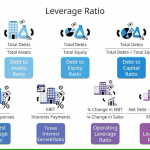Investing in Special Purpose Acquisition Companies (SPACs) has gained significant traction in recent years, offering an alternative and exciting avenue for savvy investors.
But, like any investment strategy, it’s important to weigh the pros and cons before diving in. In this article, we will explore the advantages and disadvantages of investing in SPACs, as well as alternative options for those seeking compelling investment opportunities.
Understanding the SPAC process
To make informed investment decisions, it’s crucial to understand the process of investing in SPACs. SPACs are formed by a group of investors, often led by a prominent figure or management team, with the sole purpose of raising capital through an initial public offering (IPO).
The funds raised are then held in a trust until a suitable acquisition target is identified. Once a target company is identified, the SPAC undergoes a merger or acquisition, resulting in the target company becoming publicly traded.
This process allows the target company to access public markets and raise additional capital for growth and expansion.
As an investor, it’s important to research and evaluate the target company to assess its potential for success and determine whether it aligns with your investment objectives.
Pros of investing in SPACs
SPACs offer investors several enticing advantages. Firstly, they provide the potential for substantial returns, often in a shorter time frame compared to traditional initial public offerings (IPOs).
This is due to the nature of SPACs, which allow investors to participate in the early stages of a company’s growth before it goes public. By getting in early, investors have the opportunity to capitalize on the potential upside and enjoy significant returns on their investment.
Typically, SPACs are founded by sponsors or investors who have prior experience in a certain market or industry, and they concentrate on transactions within that domain. A SPAC’s founders may have in mind an acquisition target, but they usually do not divulge that information until after the IPO.
SPACs, sometimes known as “blank check companies,” provide prospective IPO investors with less information. SPACs go to underwriters and institutional investors prior to releasing shares to the public.
During SPACs’ golden years in 2020 and 2021, famous names and semiretired or retired executives flocked to them, including Goldman Sachs, Credit Suisse, and Deutsche Bank.
The money from an IPO is deposited by SPACs into a trust account that accrues interest and from which they are not allowed to take money unless it is needed to complete an acquisition. Investors will receive their money back and the SPAC will be liquidated if it is unable to buy a target.
A SPAC has two years to close a deal or risk going out of business. A portion of the interest that the SPAC gets from the trust might be used as working capital. Following an acquisition, SPACs are usually listed on a major stock exchange.
Investing in SPACs can provide access to promising companies that are not yet publicly traded. This allows investors to be part of exciting growth stories and potentially benefit from the success of these companies as they mature and expand.

The ability to invest in these companies before they go public can be a major draw for those looking for unique investment opportunities.
Lastly, SPACs offer a level of transparency and accountability that is not always present in other investment vehicles. SPACs are required to disclose their investment plans and strategies upfront, allowing investors to make informed decisions.
Additionally, the funds raised by SPACs are held in trust until a suitable acquisition target is identified, providing a layer of security for investors.
However, it’s important to note that investing in SPACs is not without its risks.
Cons of investing in SPACs
One of the main concerns associated with SPAC investing is the lack of a proven track record. Unlike well-established companies with a history of financial performance, SPACs are typically new entities with limited or no operating history.
This lack of track record makes it challenging for investors to assess the potential success or failure of a SPAC investment.
Another potential downside of investing in SPACs is the potential for dilution of shareholders’ value. When a SPAC acquires a target company and takes it public, new shares are issued, which can dilute the ownership stake of existing shareholders.
This dilution can impact the potential returns on the investment and reduce the overall value of the shares held by investors.
Furthermore, SPAC investments are subject to market volatility and regulatory risks. The success of a SPAC investment is highly dependent on the ability of the management team to identify and acquire a suitable target company.
If the management team fails to find a target company within the specified timeframe, the SPAC may be forced to liquidate, resulting in losses for investors.
Evaluating SPAC investments
When evaluating SPAC investments, there are several key factors to consider. Firstly, it’s important to assess the management team behind the SPAC.
Look for experienced and reputable individuals with a track record of successful investments. The management team plays a crucial role in identifying suitable acquisition targets and executing the merger or acquisition process.
Additionally, analyze the investment strategy and target industry of the SPAC. Consider the growth potential of the industry and whether it aligns with your investment goals. Thoroughly research the target company and its competitive landscape to gain insights into its potential for success.
Furthermore, review the terms and structure of the SPAC. Pay attention to factors such as the redemption rights, which allow investors to redeem their shares if they do not approve of the acquisition target.
Understand the timeline and deadlines associated with the SPAC, as well as any potential fees or expenses involved.
How to identify reputable SPACs
Identifying reputable SPACs can be challenging, given the relatively new and evolving nature of this investment vehicle. However, there are several indicators that can help guide your decision-making process.
Firstly, research the background and track record of the management team. Look for individuals with experience in the industry and a history of successful investments. A strong management team increases the likelihood of identifying and executing successful acquisitions.
Secondly, consider the reputation and credibility of the underwriters and sponsors involved in the SPAC. Reputable underwriters and sponsors can provide additional validation and increase the likelihood of a successful SPAC investment.
Lastly, review the terms of the SPAC, including the redemption rights and the quality of the target company. A well-structured SPAC with a reputable target company can significantly enhance the potential for success.
Risks associated with SPAC investments
While SPACs offer exciting investment opportunities, it’s essential to be aware of the risks involved. One of the main risks is the potential for the target company to underperform or fail to meet expectations.
Investing in early-stage companies inherently carries a higher level of risk, as their success is not guaranteed.
Another risk is the potential for the management team to make poor investment decisions. The ability of the management team to identify and execute successful acquisitions is critical to the success of a SPAC investment.
If the management team lacks experience or makes misguided decisions, it can negatively impact the performance of the investment.
Additionally, market volatility and regulatory risks can impact the success of a SPAC investment. Changes in market conditions or regulatory requirements can disrupt the acquisition process or delay the timeline, potentially resulting in losses for investors.
While investing in SPACs carries inherent risks, there are strategies to mitigate these risks and increase the likelihood of successful investments.
To distribute risk across various asset classes and investment vehicles, diversify your portfolio first. You can lessen the effect of possible losses from individual SPAC investments by diversifying.
Before making an investment in a SPAC, do extensive study and due diligence. To determine the likelihood of success, evaluate the target firm, the management team, and the trends in the industry. Investing in successful SPACs can be more likely if you base your decisions on thorough study.
Finally, keep abreast of any changes to regulations or market circumstances that can affect SPAC investments. You may limit potential losses and make timely adjustments to your investing strategy by being aware of potential risks and problems.
As more and more investors flock to the Special Purpose Acquisition Company (SPAC) market in search of high-potential investment opportunities, it’s crucial to understand the risks involved and explore alternative options for mitigating them.
While SPACs offer a unique way to access promising companies before they go public, they also come with their fair share of uncertainties.
Alternative options for mitigating risks in SPAC investing
While SPACs may seem enticing, it’s important to consider alternative investment options that offer stability and diversification.
One such option is investing in exchange-traded funds (ETFs). ETFs provide exposure to a basket of securities, allowing investors to diversify their investments and minimize risk. With a wide range of ETFs available, investors can choose funds that align with their investment goals and risk tolerance.
Another alternative is investing in well-established companies with proven track records. These companies have a history of financial performance, making it easier for investors to assess their potential for growth and profitability.
Investing in established companies can offer stability and potentially provide consistent returns over the long term.
While SPACs offer an enticing investment opportunity, there are alternative options available for investors looking to mitigate the risks associated with this type of investment.
Exploring these alternatives can provide investors with additional avenues for diversification and potentially reduce their exposure to risk.
Investing in traditional IPOs
One alternative option to consider is investing in traditional IPOs. Unlike SPACs, traditional IPOs involve companies that have already gone through a rigorous due diligence process and have a proven track record.
Investing in traditional IPOs allows investors to access companies that have already demonstrated their potential for growth and profitability.
However, it’s important to note that investing in traditional IPOs also comes with its own set of risks. The IPO market can be highly volatile, and there is no guarantee that a company’s stock price will increase after going public.
Thorough research and analysis of the company’s financials, competitive landscape, and industry trends are essential before investing in a traditional IPO.
Investing in direct listings
Another alternative to SPAC investing is investing in companies that choose to go public through a direct listing. In a direct listing, a company bypasses the traditional IPO process and directly lists its shares on a stock exchange. This allows investors to invest in the company without the involvement of a SPAC.
Direct listings provide investors with the opportunity to invest in established companies that have a proven track record and a clear business model. Additionally, direct listings can offer more transparency compared to SPACs, as the company’s financials and operations are already well-established.
However, it’s important to note that direct listings are still relatively new and less common compared to traditional IPOs and SPACs. As a result, there may be limited opportunities available for investors looking to invest through this avenue.
Investing in venture capital funds
Investing in venture capital funds is another alternative option for mitigating risks in SPAC investing. Venture capital funds pool investors’ capital to invest in early-stage companies with high growth potential.
By investing in a venture capital fund, investors gain exposure to a diversified portfolio of start-ups, reducing the risk associated with investing in a single company.
Venture capital funds typically have a team of experienced professionals who conduct thorough due diligence on potential investments. This expertise can help investors identify promising companies and navigate the risks associated with early-stage investing.
However, it’s important to note that investing in venture capital funds also comes with its own set of risks.
Early-stage companies are inherently risky, and there is a high probability of failure. Investors should carefully evaluate the track record and investment strategy of the venture capital fund before making any commitments.
Diversifying your investment portfolio
Diversifying your investing portfolio is essential to reducing risks, regardless of the investment strategy you choose. You can lessen the influence of any one investment on your whole portfolio by distributing your investments over a variety of asset classes, industries, and geographical areas.
Diversification allows investors to potentially benefit from the growth of different sectors while minimizing the risk associated with any individual investment.
By allocating investments across various asset classes, such as stocks, bonds, and real estate, investors can achieve a balanced portfolio that aligns with their risk tolerance and investment goals.
Consulting with a financial advisor
When considering alternative options for mitigating risks in SPAC investing, it’s essential to seek the guidance of a qualified financial advisor.
A financial advisor can provide personalized advice based on your individual financial situation, risk tolerance, and investment goals. They can help you navigate the complexities of different investment options and ensure that your investment strategy aligns with your long-term objectives.
Conducting thorough due diligence
Regardless of the investment option chosen, conducting thorough due diligence is essential in mitigating risks.
Before making any investment decisions, investors should research and analyze the target company’s financials, industry trends, competitive landscape, and management team. This research can provide valuable insights into the potential risks and rewards associated with the investment.
While SPACs offer exciting investment opportunities, it’s crucial to understand the risks involved and explore alternative options for mitigating them.
By considering alternative avenues such as investing in traditional IPOs, direct listings, or venture capital funds, diversifying your investment portfolio, consulting with a financial advisor, and conducting thorough due diligence, investors can make more informed investment decisions in the world of SPACs.
Remember, investing always carries risks, and it’s essential to align your investment strategy with your risk tolerance and long-term objectives. By staying informed and making educated investment decisions, you can navigate the risks associated with SPAC investing and potentially achieve your investment goals.
Tips for building a well-rounded investment portfolio
Building a well-rounded investment portfolio is crucial for several reasons. First and foremost, it helps to minimize risk. By diversifying your investments across different asset classes, you can reduce the impact of any single investment’s poor performance. In other words, if one investment underperforms, the others may compensate and help maintain the overall stability of your portfolio.
Secondly, a well-rounded portfolio allows you to capture gains from different sectors. Different asset classes perform differently at different times. For example, stocks may outperform bonds during a bull market, while bonds may provide stability during periods of economic uncertainty. By having exposure to multiple asset classes, you increase your chances of benefiting from various market conditions.
Lastly, a well-rounded portfolio helps to manage risk and achieve better returns. When you invest in different asset classes, each with its own risk and return characteristics, you can balance your portfolio to align with your risk tolerance and investment goals. This approach allows you to take advantage of potential returns while minimizing the downside risk.
Understanding risk and diversification
Before diving into building a well-rounded investment portfolio, it’s crucial to understand the concept of risk and the role of diversification. Risk refers to the potential for loss or uncertainty in investment returns. Different investments carry different levels of risk. For example, stocks are generally considered riskier than bonds.
Diversification is a risk management strategy that involves spreading your investments across various asset classes, industries, and geographical regions. This approach helps to reduce the impact of any single investment’s poor performance on your overall portfolio. By diversifying, you can potentially increase your chances of achieving consistent returns over the long term.
To effectively diversify your portfolio, you need to consider different investment options, such as stocks, bonds, real estate, and alternative investments like commodities or cryptocurrencies. Each asset class behaves differently under different market conditions, so having exposure to a mix of assets can help to achieve a well-rounded portfolio.
Determining your investment goals and risk tolerance
Before constructing your investment portfolio, it’s essential to determine your investment goals and risk tolerance. Investment goals can vary widely from person to person, depending on factors such as age, financial situation, and desired outcomes. Some common investment goals include retirement planning, saving for a down payment on a house, or funding a child’s education.
Your risk tolerance is another critical factor to consider. Risk tolerance refers to your ability to withstand fluctuations in the value of your investments. Some individuals can tolerate higher levels of risk in pursuit of potential higher returns, while others prefer a more conservative approach. Understanding your risk tolerance will help you determine the appropriate asset allocation for your portfolio.
Asset allocation strategies for a well-rounded portfolio
Asset allocation refers to the distribution of your investments across different asset classes. The goal is to create a balanced portfolio that aligns with your investment goals and risk tolerance. Here are a few asset allocation strategies to consider:
- Traditional approach: In this approach, you allocate your investments based on a fixed percentage across different asset classes. For example, you may allocate 60% to stocks, 30% to bonds, and 10% to real estate. This strategy aims to achieve a balance between growth and stability.
- Age-based approach: This strategy takes into account your age and investment horizon. The general rule of thumb is to allocate a higher percentage to stocks when you are younger and have a longer investment horizon. As you get closer to retirement, the allocation shifts towards more conservative investments like bonds and cash.
- Tactical approach: The tactical approach involves adjusting your asset allocation based on market conditions and economic indicators. For example, if you anticipate a downturn in the stock market, you may reduce your exposure to stocks and increase your allocation to bonds or other defensive assets.
Remember, asset allocation is not a one-time decision. It requires regular monitoring and rebalancing to ensure your portfolio stays aligned with your goals and risk tolerance.
Choosing the right investment vehicles
Once you have determined your asset allocation strategy, the next step is to choose the right investment vehicles to implement your portfolio. There are various investment options available, each with its own characteristics and advantages. Here are a few common investment vehicles to consider:

- Stocks: Investing in individual stocks allows you to own shares of specific companies. Stocks have the potential for high returns but also come with higher risks. It’s important to research and analyze individual stocks before making investment decisions.
- Bonds: Bonds are debt instruments issued by governments, municipalities, or corporations. They provide a fixed income stream and are considered less risky than stocks. Bonds can be a good option for income-focused investors or those seeking more stability in their portfolio.
- Mutual funds: Mutual funds pool money from multiple investors to invest in a diversified portfolio of stocks, bonds, or other assets. They offer instant diversification and professional management, making them suitable for investors who prefer a hands-off approach.
- Exchange-Traded Funds (ETFs): ETFs are similar to mutual funds but trade on stock exchanges like individual stocks. They offer the benefits of diversification and flexibility, with lower expense ratios compared to traditional mutual funds.
- Real estate: Investing in real estate can provide both income and potential appreciation. You can invest in properties directly or through Real Estate Investment Trusts (REITs), which allow you to invest in a diversified portfolio of properties.
- Alternative investments: Alternative investments include assets like commodities, hedge funds, private equity, or cryptocurrencies. These investments can provide diversification and potentially higher returns but may also carry higher risks and require specialized knowledge.
When choosing investment vehicles, consider factors such as fees, liquidity, tax implications, and your ability to monitor and manage the investments effectively.
Researching and analyzing potential investments
Before making any investment decisions, it’s crucial to conduct thorough research and analysis. This involves evaluating the fundamentals of the investment, understanding the market trends, and assessing the potential risks and rewards. Here are a few steps to consider:
- Fundamental analysis: For stocks and bonds, fundamental analysis involves examining the financial health, management team, competitive position, and growth potential of the company or issuer. This analysis helps you determine the intrinsic value of the investment.
- Technical analysis: Technical analysis involves analyzing historical price and volume data to identify patterns and trends. This approach can help you determine the appropriate entry and exit points for your investments.
- Economic analysis: Keeping an eye on economic indicators and market trends can provide insights into the overall health of the economy and specific industries. This analysis can help you identify potential investment opportunities or risks.
Risk assessment: Assessing the risks associated with potential investments is crucial. Consider factors such as market risk, credit risk, liquidity risk, and geopolitical risks. Understanding the risks allows you to make informed decisions and manage your portfolio effectively.
Monitoring and rebalancing your portfolio
Building a well-rounded investment portfolio is not a one-time task. It requires ongoing monitoring and periodic rebalancing. Here are some best practices to consider:
- Regular review: Monitor the performance of your investments regularly. Stay informed about market trends, economic indicators, and any news that may impact your investments.
- Rebalancing: Over time, the performance of your investments may result in an imbalance in your asset allocation. Rebalancing involves selling or buying assets to bring your portfolio back to your desired asset allocation. This ensures that your portfolio stays aligned with your goals and risk tolerance.
- Tax considerations: Be mindful of the tax implications of buying, selling, and holding investments. Consult with a tax advisor to understand the tax consequences of your investment decisions and how to optimize your portfolio from a tax perspective.
- Stay disciplined: Avoid making impulsive investment decisions based on short-term market fluctuations. Stick to your long-term investment strategy and resist the temptation to chase hot trends or panic during market downturns.
Seeking professional advice and guidance
Building a well-rounded investment portfolio can be a complex task, especially if you are new to investing or have unique financial circumstances. In such cases, seeking professional advice and guidance can be beneficial. A financial advisor or investment professional can help you understand your investment options, analyze your risk tolerance, and create a customized investment strategy.
When selecting a financial advisor, consider their qualifications, experience, and track record. Look for professionals who are registered with regulatory bodies and adhere to fiduciary standards, meaning they are legally obligated to act in your best interest.
Conclusion
Investing in SPACs can be an exciting and potentially lucrative investment strategy. However, it’s important to carefully consider the pros and cons before making any investment decisions.
While SPACs offer the potential for substantial returns and access to promising companies, there are risks involved, including the lack of a proven track record and the potential for dilution of shareholders’ value.
Exploring alternative options, such as investing in ETFs or well-established companies, can provide stability and diversification in your investment portfolio. These alternatives offer more predictable returns and lower risk compared to SPAC investments.
By understanding the SPAC process, evaluating SPAC investments, and identifying reputable SPACs, you can make informed decisions and increase the likelihood of successful investments.
Additionally, by mitigating risks through diversification and conducting thorough research, you can navigate the challenges associated with SPAC investing.
Ultimately, the key to successful investing lies in knowledge, research, and a balanced approach. By carefully weighing the pros and cons and exploring alternative options, you can build a robust investment portfolio that aligns with your financial goals and risk tolerance.






